Hello Interactors,
I ended up walking almost six miles in two days last week that included two trips by bus and light rail. I’m always surprised by the rich experience that comes with choosing to walk, bike, or bus. But it’s not always pleasant. A car is comfortable, quiet, and convenient but can be experientially anemic. I’m fortunate to have these choices. Not everyone does. And what choice they do have can be unfair and even dangerous. Is that the American way?
As interactors, you’re special individuals self-selected to be a part of an evolutionary journey. You’re also members of an attentive community so I welcome your participation.
Please leave your comments below or email me directly.
Now let’s go…
DO THESE ROADS MAKE ME LOOK FAT?
She slammed on the brakes and my bag slid to the floor. My knees slammed against the seat leaning inches from my kneecaps. Just as I grabbed my bag, she floored it. Careening around the curved onramp I felt the gravitational pull suck my head tight against the window as I struggled to right myself. As she merged with flowing traffic on the freeway I saw her glance in the rearview mirror. She wore dark, reflective wrap-around sunglasses and a grimace. Teeth clinched, she pressed the accelerator to the floor. She was on a mission. And I was along for the ride.
I generally cut bus drivers some slack. They don’t have it easy. These herky-jerky driving patterns are often due to the strict schedule they’re incented to keep. Frequency and ease of access to bus stops are two of the more effective ways to get people to use transit. For those who can’t afford a car, or are unable to drive, walking, biking, or bussing is the only real affordable alternative to getting around. There are some, like me, who own a car but sometimes choose to walk, bike, or bus. After all, America is the ‘land of the free’ where we freedom of choice.
But those choices are not equitable. American cities and our countryside were planned by men who favored a single mode of transportation: cars. It seemed like a good idea at the time, but it quickly turned out to be good for some, bad for most, and worst for the environment and our health. Charlie Chaplan once said one of the ironies of life is doing the wrong thing at the right moment. America’s transportation history is riddled with irony.
Cars and roads are not categorically bad. But too much of a good thing often is. Besides, not everyone can, should, or wants to own a car and yet the ‘Made in America’ landscape and economic structure dictates you must. If not, then you must suffer the inconveniences, inequalities, and risks that come with a lack of equitable choices. If you’ve ever visited or lived in a city or country with equitable, convenient, and comfortable transportation choices (I’m looking at you Switzerland) you can see the possibilities. It’s a choice. And America, the land of the free and home of the brave, is, ironically, afraid to choose freedom of choice when it comes to transportation.
Which exposes another irony of American transportation. Those who most covet and defend their independence from society and the government – and thus choose to isolate themselves away from dense urban areas and in private vehicles – are thus dependent on the whole of society and the government to finance, design, build, and maintain their roads and vehicles. Both of which rely on government subsidies that make such choices economical in the first place. And in a final twist of the irony knife, most of the natural resources, parts, materials, and manufacturing come from socialistic governments they despise. And they’re made by ethnicities many of them fear, but are also granted more transportation choices than they are.
America’s insistence on car ownership is in a sense, pardon the pun, autocratic. And given the amount of government subsidies flowing to the auto and fossil fuel industry, especially when they need bailing out, can make America look pretty socialistic. I just wish we could all get a return on those investments the government made to private companies using our public tax dollars.
The truth is, we are all dependent on forms of socialism (i.e. economy, military, utilities, transportation, and communication) and capitalism (i.e. free markets, freedom to enlist, freedom to go off-grid, freedom to choose transportation, and freedom to choose a mobile carrier). They can, and do, coexist to varying degrees. But restricting the ability to viably and equitably move within and between our communities to a single choice feels like an impingement on freedom. And yet the number one symbol of American freedom, prosperity, and democracy around the world is the automobile. Car symbolism may be one of the biggest determining factors for America’s addiction to the autocracy of automobility.
No sooner were the post World II freeways built were they filled with American made automobiles. Bucolic car-dependent suburbs filled with carbon consuming contraptions purchased by affluent consumers (mostly white men) swept up in a euphoric post-war economic boom. Hollywood was releasing movies depicting glamourized ideals of American suburban life. The car served as a literal and metaphorical vehicle for the virtues of freedom, independence, comfort, power, speed, and exhilaration. It propagated this myth: car ownership brings social superiority, security from the ills of society, and a path to the future. And yet reality told a different story. Just below the famous Hollywood sign in Los Angeles where these movies were being made traffic jams were forming as early as 1950.
Just as these new car owners were about to buy their second vehicle some wondered if indeed the wrong decision was made at the right time. People were dying in violent car related deaths, roads were clogged during rush hour, and skies turned yellow with smog. So they made more wrong decisions at the right time by building even more roads. In 1955 the social and urban historian and critic Lewis Mumford wrote in the New Yorker,
“Most of the fancy cures that the experts have offered for New York's congestion are based on the innocent notion that the problem can be solved by increasing the capacity of the existing traffic routes, multiplying the number of ways of getting in and out of town, or providing more parking space for cars that should not have been lured into the city in the first place. Like the tailor's remedy for obesity—letting out the seams of the trousers and loosening the belt—this does nothing to curb the greedy appetites that have caused the fat to accumulate."1
For decades the fat kept creeping and the belts keep loosening. The greedy appetites of car owners, urban planners, and civil engineers proved insatiable. Then came the 1973 oil crisis and inflation. Gas imports plummeted, prices climbed, and commuters sought alternatives. Carpooling became popular again after first being introduced during World War II as a gas rationing strategy. One poster from this era read, “When you ride alone, you ride with Hitler.” Imagine this government issued roadside billboard today: “When you ride alone, you ride with Putin.”
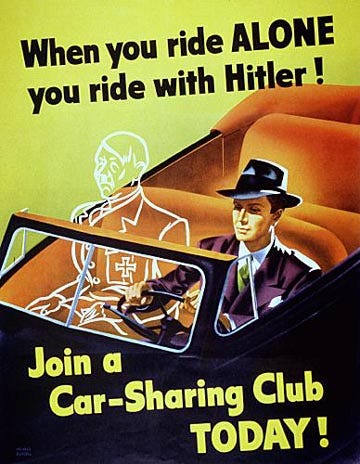
DROWNING IN A POOL OF DEPENDENCIES
But the 1970s saw both the reintroduction of carpooling and its peak utilization. Still, transportation experts knew it reduced the number of cars on the road and thus eased congestion. So they studied ways to incent people to keep doing it. In 1977 two civil engineers from Boston published a paper that analyzed various carpool incentives. Their paper continues to be referenced by researchers 45 years later…probably because not much has changed.
Their four main findings were:
Carpooling “incentives” will attract transit as well as drive-alone commuters. However, the potential area-wide increase of ride sharing is small; therefore decrease of Vehicle Miles Traveled (VMT) is small.
Auto “disincentives” are far more effective than carpooling “incentive” in increasing ride sharing and transit use. However, these policies are less acceptable to the public and therefore less likely to be implemented.
Therefore, a coordinated programme package of both “incentives” in increasing ride sharing and “disincentives” could effectively increase carpooling and reduce congestion, VMT and fuel consumption. In particular, significant parking incentives and disincentives appear to be the most effective way of increasing carpooling.
Carpooling strategies directed at work trips result in increased auto travel for non-work purposes because of increased auto availability during work hours for non-working members of a household. The increased non-work VMT offsets by approximately one third the reduction in work VMT.2
They also introduced a transportation choice hierarchy describing the long, medium, and short range travel-related decisions. Long range decisions are major locational decisions like a change in a workplace, residential location, and the type of house chosen. Medium range include the decision to buy a car which is “highly interdependent” on the “usual mode of travel” to work (i.e. owning a car is highly correlated with your decision to use it every day). And short range decisions are “non-work travel decisions.” They note the “frequency, destination, and mode” for these trips should be considered alongside other transportation choices in the household. This is evidenced in the non-intuitive conclusion of number four above. Namely, congratulations on carpooling, now your stay-at-home spouse or partner will be driving more than you think - and possibly more than your commute.
We can see how the urban planning and design of the built environment can impact these decisions. Deciding where to live is a long range decision impacting transportation choice. Not everyone can afford a car or afford to live where cars are necessary for commuting. At the same time, people may work where a car is not needed, like next to their employer, but can’t afford to live there. Such is the case in Seattle right now. So they’re forced to live where they can afford to live, but not make enough money to own and operate a car. Not all of these places are well served by transit which limits their freedom of choice and unduly burdens them relative to other more affluent members of society. Therefore, car ownership, socioeconomics, and the built environment all play a role in the decision to use a car get around.
‘Socioeconomic status’ influences ‘where to live.’ Both ‘socioeconomic status’ and ‘where you live’ can each independently influence ‘car use.’ For example, someone may be able to afford to own a car but not the gas needed to use it. Somebody else may have enough money to own many cars, buy much fuel, and drive excessively. In addition, a person may live where a car is not needed and thus use it less. Or they may live far from work and use a car every day.
However, while ‘socioeconomic status’ influences ‘where to live’ and both of those factors independently influence ‘car use’ they also influence the decision to own a car in the first place. And this factor, ‘car ownership’, is emerging as a primary mediating factor in ‘car use.’345 That is, even if someone can afford to live in a dense urban area full of places to walk to, including a job, just the fact of owning a car plays a nonsignificant role in the decision to use it or not. Consequently, while cities increasingly are making plans to densify and make their cities and towns more walkable and bikeable, if residents happen to be car owners these changes in ‘the built environment’ may not change their patterns of ‘car use.’ Especially if they’re affluent enough to not be greatly impacted by the cost of car ownership.

There’s another important mediating factor often overlooked in transportation research. It may also be the most influential, the most deep seeded, the hardest to pin down, and the hardest to change: the psychological attachment and addiction to cars.
The University College of London transportation professor, Peter Jones, offers graduated distinctions of car dependency among people and society. Starting from the top:
Car-reliant trip: Alternative forms of motorized transport are not available and the journey distance is too long for walking or cycling
Car-reliant activity or journey - Difficult to make the journey in a different way because of purchases (goods) and/or complex multidestination trips
Car-reliant lifestyle - Impossible to access a given destination by other transport mode than car
Car-reliant person - Unable to use other transport than car
Car-reliant society - High levels of car use among population, necessity of car to participate in essential social activities
Car-convenient society - Car is most convenient choice
Car-dependent person - Car is statement of status or linked to self-esteem or personal identity
Car-addicted person - A car “fanatic,” whose life revolves around cars6
FEARS, FRIGHTS, FLIGHTS, FIGHTS, AND RIGHTS
Stefan Gössling of Lund University in Sweden take these one step further offering a distinction between “real” and “perceived” dependencies in his 2017 book called The Psychology of the Car. He says, “’real dependencies’ refer to basic life needs.” These include the need to “commute to work, to shop, to visit a doctor, see friends and family, to transport goods, to participate in social work, go to church, or to make leisure trips.” The car is treated like an appliance for utilitarian purposes. In contrast, “’perceived’ car dependency arises out of emotions involved with the car, or where alternative transport is considered ‘dysfunctional…’” For example, the anxiety that can come with determining the right bus, scheduled times, bus fare or getting on the wrong bus and getting lost. Some are fearful being around controlled environments patrolled by security. Others fear confrontations with people with mental health issues, drug and alcohol addictions, or being trapped in smelly, noisy and claustrophobic spaces.
Gössling reminds us there are many fears and phobias that can trigger fright-flight-fight responses which results in car use becoming an addiction in itself. In America, where guns are prevalent, homelessness is rampant, and drug addiction and alcoholism is on the rise there are many reasons to be afraid and anxious. Cars, like guns, can make people feel safe and protected, even though they are both the most dangerous weapons there are.
Gössling suggests fear or anxiety and safety or security aren’t the only psychological concerns wrapped up in transportation choice and car addiction. There is also identity and social status, trauma, and even obesity. He notes obese people are even more reliant on cars even though their condition would benefit from walking or biking. Even if it was to a bus stop…if there is one.
Automakers tap into these insecurities with advertising and car design. They know a bigger car can make people feel safer, elevate them above others and boost inferiorities. They reflect and signal power, size, and strength which are all recognized as symbols of superiority throughout society…and the entire animal kingdom. Attempts by the government to impede on any of these psychological crutches is therefore viewed as a threat to their identity. Smaller, slower cars are deemed inferior. Wimpy. Raising prices on gasoline, car tabs, or parking by authorities is a threat to their perceived superiority and control. Encouraging the use of public transit diminishes their social standing. Building dense housing near single family residences threatens their independence and increases the odds of awkward social encounters that may trigger fear and anxiety prompting grasps for safety and security.
And yet, we can’t keep loosing the belt because it is only making us fatter. Besides, most residents in most cities oppose street widening. We have a fixed amount of space for cars and trucks with an increasing number of urban residents. The only answer is fewer additional cars on our roads and less car use by current car owners. We also need those with unhealthy attachments and addictions to face their fears.
Policy makers and politicians know backlash comes from threats to these very real and complex socio-psychologies. Public interventions are threats to private habits, regimes, identities, and values. Many cities have progressive plans to tip the transportation and land use balance, but executing these plans can trigger very real deep-seeded fear that leads to fierce opposition. It’s easier to just loosing the belt than hit the gym.
But experts agree changes to the built environment are necessary if we’re going to save ourselves from increased congestion and pollution. We need to make all neighborhoods more walkable and shoppable. Everyone should insist on a grocery store within a 10 minute walk. To make these businesses work in our capitalistic reality, requires more customers. More customers can only happen when there is more dense housing – even if it’s duplexes, triplexes, and townhomes.
Exurban and rural residences should insist on some form of public transit even if it’s on-demand. For example Denmark offers, in coordination with AARP, a “coordinated demand responsive transportation system” that “keeps older Danes, especially those living in the rural areas, aging in place.”
But solutions don’t have to come from the government. Recently the New York Times featured a story about a carshare coop in New York called “The Drivers Cooperative”. They are “a driver-owned ridehailing cooperative” where “drivers make more on each trip, all profits go back to drivers, and drivers have democratic control over the decisions that affect their lives.”
If this reeks of socialism don’t tell one of the reddest and most rural and sparsely populated states in the country, North Dakota. They enjoy some of the fastest internet speeds in the country due to their high-speed broadband ‘community network’ that is a federal tax exempt cooperative. It’s also generally cheaper than the competition. It may be hard to imagine now, but farm cooperatives in America were once hotbeds of socialist ideals and ideas. That independent and pro-social spirit just may be rekindling in rural America. It could bring new meaning to the ‘red’ counties of America. Greetings comrades.
Changes to the built environment are necessary, but not sufficient. Socioeconomic inequities have to be rebalanced. The human right to move about this world should not be impeded by ability, race, religion, ethnicity, or social status. Safe, secure, accessible, comfortable, and efficient transportation must be made equal for all members of society.
But the psychology of car owners must not be overlooked. Car ownership is the key mediating factor in whether it is used and by how much. Policy makers can’t ignore the psychological needs, real and perceived, of car owners. Car addicts will resist change so long as they feel threatened by it. This requires communication strategies that don’t antagonize, diminish, or create cognitive dissonance among them.
Those cities successful in shifting norms and behavior of car owners combine multiple approaches. First and foremost they make infrastructure changes that improve conditions for cycling, walking, and transit. They also do what those Boston researchers and engineers suggested in 1977 to most effectively induce carpooling. They impose restrictions on car use.
But they are also mindful of the psychology of those attached and addicted to cars. They appeal to car owners by using values they can relate to like speed, efficiency, relaxation, and cost. When cycling, walking, and transit is improved and endorsed using these rational values social norms and habits indeed shift. As these changes demonstrate reductions in congestion their adoption and acceptance grows. Fewer cars on the road also means less noise, cleaner air and water, fewer deaths, and happier, healthier people which are things everyone wants.
As professor Jones in London says,
“We need to work out what society we want to live in, and build the connectivity that delivers that vision (think healthy, socially cohesive, compact, local).”7
What I found last week walking with my friends around Seattle is a city built for cars. That was the society people wanted to live in back in the 1950s and 60s. But I also found the light rail was at capacity during off-peak times, cyclists were flowing down protected bike lanes, ride-share bikes and scooters were rolling, and we saw parts of the city unseen from a car. We walked and talked, giggled and wriggled, and trudged up some stairs. We hunted for haunts and restaurants as the rain moistened the air. And on the way home I glanced out the window from the “bus-only” lane. I peered into the cars stuck in traffic waiting for my “bus-only” light to change. What I saw saddened me. There they sat; single occupants in a single car, but not one single smile. They were surely comfortable in their safe and silent spaces, but what should we make of those sad and lonely faces?
And then suddenly I was thrown back in my seat. That bus driver had a schedule to keep.
Roads Were Not Built for Cars: How cyclists were the first to push for good roads & became the pioneers of motoring. Carlton Reid. Island Press.
Methodology for Short-Range Travel Demand Predictions: Analysis of Carpooling Incentives. Moshe Ben-Akiva and Terry J. Atherton. Journal of Transport Economics and Policy. 1977.
Car ownership as a mediating variable in car travel behaviour research using a structural equation modelling approach to identify its dual relationship. Veronique Van Acker, Frank Witlox. Journal of Transport Geography. 2010.
Examining the impacts of residential self-selection on travel behavior: A focus on methodologies. Patricia L. Mokhtariana, XinyuCao. Transportation Research Part B: Methodological. 2008.
Exploring the influence of built environment on travel mode choice considering the mediating effects of car ownership and travel distance. Chuan Ding, Donggen Wang, Chao Liu, Yi Zhang, Jiawen Yang. Transportation Research Part A. 2017.
Stefan Gössling. The Psychology of the Car: Automobile Admiration, Attachment, and Addiction. Elsevier. 2017.
Creating Communities Fit for the Future. Peter Jones. Santec.

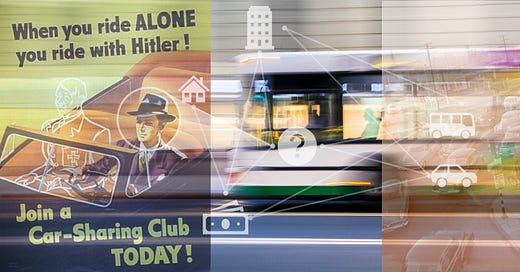







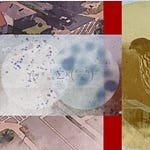


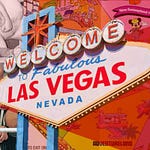


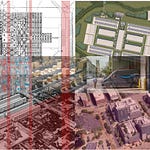
Share this post